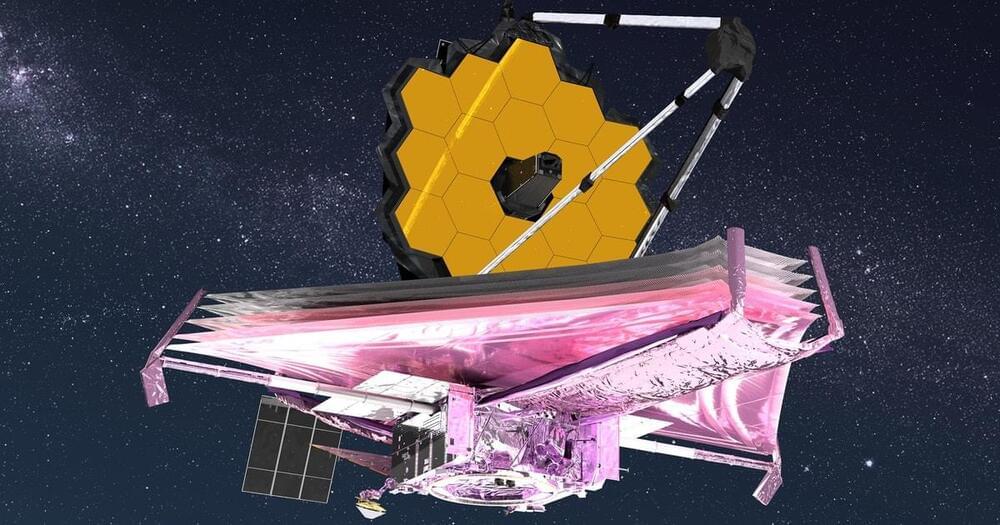A new approach to building the soft actuators, which drive the drones’ wings boosts the lift-to-weight ratio to 3.7 to 1.
A new scientific study says the universe may actually change its own laws of physics to achieve stability and evolution, called “The Autodidactic Universe.”
One of the most important issues in contemporary societies is the impact of automation and intelligent technologies on human work. Concerns with the impact of mechanization on jobs and unemployment go back centuries, at least since the late 1,500 ’ s, when Queen Elizabeth I turned down William Lee ’ s patent applications for an automated knitting machine for stockings because of fears that it might turn human knitters into paupers. [2] In 1936, an automotive industry manager at General Motors named D.L. Harder coined the term “automation” to refer to the automatic operation of machines in a factory setting. Ten years later, when he was a Vice President at Ford Motor company, he established an “Automation Department” which led to widespread usage of the term. [3]
The origins of intelligent automation trace back to US and British advances in fire-control radar for operating anti-aircraft guns to defend against German V-1 rockets and aircraft during World War II. After the war, these advances motivated the MIT mathematician Norbert Weiner to develop the concept of “cybernetics”, a theory of machines and their potential based on feedback loops, self-stabilizing systems, and the ability to autonomously lean and adapt behavior. [4] In parallel, the Dartmouth Summer Research Project on Artificial Intelligence workshop was held in 1956 and is recognized as the founding event of artificial intelligence as a research field. [5]
Since that decade, workplace automation, cybernetic-inspired advanced feedback systems for both analogue and digital machines, and digital computing based artificial intelligence (together with the overall field of computer science) have advanced in parallel and co-mingled with one another. Additionally, opposing views of these developments have co-existed with one side highlighting the positive potential for more capable and intelligent machines to serve, benefit and elevate humanity, and the other side highlighting the negative possibilities and threats including mass unemployment, physical harm and loss of control. There has been a steady stream of studies from the 1950 ’ s to the present assessing the impacts of machine automation on the nature of work, jobs and employment, with each more recent study considering the capability enhancements of the newest generation of automated machines.
Who better to answer the pros and cons of artificial intelligence than an actual AI?
Students at Oxford’s Said Business School hosted an unusual debate about the ethics of facial recognition software, the problems of an AI arms race, and AI stock trading. The debate was unusual because it involved an AI participant, previously fed with a huge range of data such as the entire Wikipedia and plenty of news articles.
Over the last few months, Oxford University Alex Connock and Andrew Stephen have hosted sessions with their students on the ethics of technology with celebrated speakers – including William Gladstone, Denis Healey, and Tariq Ali. But now it was about time to allow an actual AI to contribute, sharing its own views on the issue of … itself.
The AI used was Megatron LLB Transformer, developed by a research team at the computer chip company Nvidia and based on work by Google. It was trained by consuming more content than a human could in a lifetime and was asked to defend and question the following motion: “This house believes that AI will never be ethical.”
KUALA LUMPUR: More than 21,000 people affected by Malaysia’s worst flooding in years — most of them in Selangor — were sheltering in relief centres on Sunday (Dec 19).
Prime Minister Ismail Sabri Yaakob announced the government would allocate an initial sum of RM100 million for house and infrastructure repairs, and will provide financial aid to affected households.
In a Facebook post, the prime minister said he had “directed all ministries to double up efforts in helping flood operations especially in the severely affected areas as soon as possible”.
Here’s what you need to know.
The James Webb Space Telescope (JWST, or Webb for short) is scheduled to launch on December 24, 2021, at 7:20 Eastern Standard Time.
It will blast off from French Guiana aboard an Ariane 5 ECA rocket, headed for an orbit around the second Lagrange point, or L2, where the gravitational pull of Earth is equal to the gravitational pull of the Sun.
Webb’s launch has to be carefully timed to put the telescope on the right path. It needs to leave Earth when our planet’s axis is tilted in the right direction, and when the launch site is pointed toward the right area of space. In other words, the James Webb Space Telescope launch has to happen during the right season and at the right time of day. On launch day, those requirements allow just a 30-minute window in which Webb will have to launch — or it will have to wait for another day.
With a decades-long track record of making space a profitable business, Luxembourg is betting big on everything from space resources, satellites and training the next generation of space entrepreneurs.
In spring 2020, shortly after the pandemic began, many scientists predicted that the coronavirus would not evolve particularly fast.
But those predictions have been upended time and again — and never more so than with omicron, a variant with an astonishing number of mutations that is rampaging through Europe and South Africa. In New York, cases are suddenly soaring to record levels as holiday parties and sports games are canceled, and California officials are bracing for a similar crisis in the coming weeks.
Once again, uncertainty and worry are rising. No one knows what the next Greek letter variants will unleash.
The many-worlds interpretation of quantum mechanics predicts the formation of distinct parallel worlds as a result of a quantum mechanical measurement. Communication among these parallel worlds would experimentally rule out alternatives to this interpretation. A procedure for “interworld’’ exchange of information and energy, using only state of the art quantum optical equipment, is described. A single ion is isolated from its environment in an ion trap. Then a quantum mechanical measurement with two discrete outcomes is performed on another system, resulting in the formation of two parallel worlds. Depending on the outcome of this measurement the ion is excited from only one of the parallel worlds before the ion decoheres through its interaction with the environment. A detection of this excitation in the other parallel world is direct evidence for the many-worlds interpretation.









